Having a functioning plumbing system is essential to keeping your home or rental property in good condition. Regular plumbing maintenance and preventive measures can save you time and money by preventing costly repairs down the line.
Without proper care and maintenance, plumbing systems can suffer from clogs, leaks, and broken pipes which can cost you a lot of money in repairs or replacements.
Fortunately, there are simple steps anyone can take to keep their plumbing in good condition without breaking the bank. This guide will discuss everything you need to know about the basic plumbing maintenance checklist for home and commercial properties.
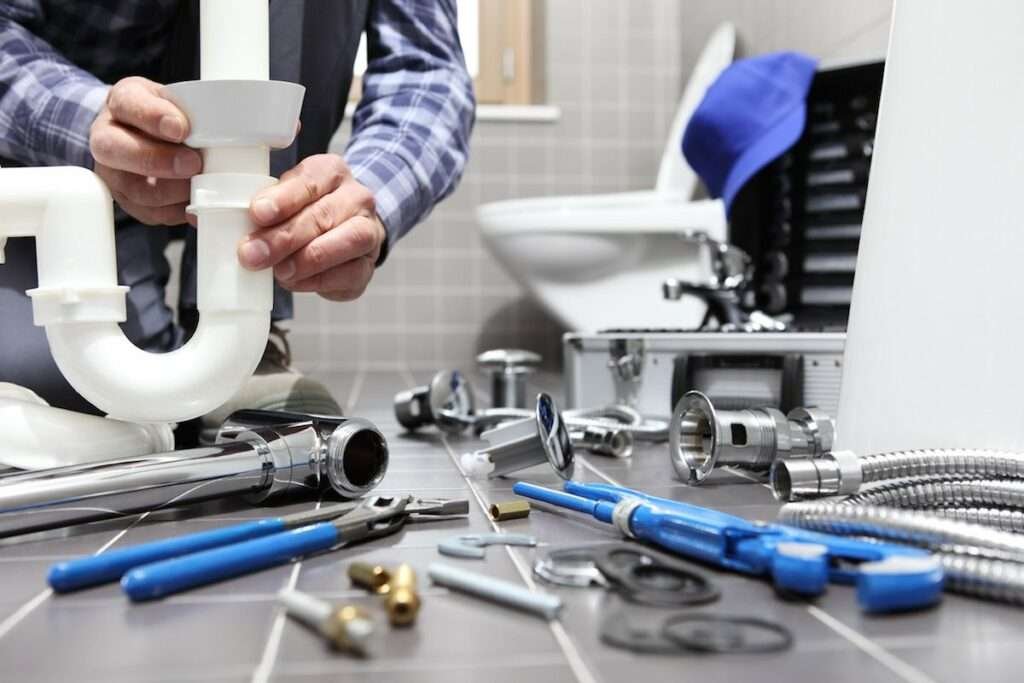
We’ll talk about what a plumbing maintenance plan is, why you need them, is monthly plumbing maintenance necessary for you, and how you can set up preventive home plumbing maintenance plans.
Let’s start exploring with a brief introduction to the plumbing system you use.
Introduction to The Plumbing Maintenance System
In order to keep your plumbing system well-maintained, you must first understand how it works. Generally speaking, there are three main types of plumbing systems:
Gravity Systems
These systems rely on gravity to move water through your house. These systems are most commonly found in older homes and apartments. The specialty of these systems means that it’s especially important to keep an eye on your water pressure, as any decrease in pressure can result in clogs and other issues. Find more about gravity sewer system on Wikipedia.
Pressure Systems
These are likely the most common type of plumbing systems found in homes today. This type of plumbing uses pumps to create pressure that moves water through pipes throughout your property. These systems are more expensive than gravity systems but can be more efficient.
Combination Systems
These systems combine both gravity and pressure-driven elements, which is why they’re known as combination systems. In these setups, water from the main line enters your home with a certain amount of pressure and then moves through gravity-fed pipes throughout the house.
Now that you know the basics of plumbing systems, let’s look at some common plumbing issues that homeowners and renters face frequently here in Toronto.
Common Plumbing Issues
Many common plumbing issues can be prevented with regular maintenance. Some of the most common problems include:
Clogs
Clogs can easily build up in your pipes, leading to slow-draining sinks and toilets. Clogged drains are a common problem, especially in kitchen sinks from food buildup or soap scum.
You can help prevent clogs by investing in drain covers that catch hair and other debris before it has the chance to clog your pipes.
Leaks
Leaky pipes or fixtures can cause water damage and higher water bills. It’s important to check regularly for signs of leaks, including damp patches on walls or ceilings, wet spots in the yard, or a decrease in water pressure. If you suspect a leak, contact a plumber as soon as possible to prevent further damage.
Broken Pipes
As mentioned by the Government of Lake County, IL, Frozen pipes are a common issue in cold climates that can lead to burst pipes and water damage. To prevent this, make sure all outdoor faucets are properly insulated and any exposed pipes in the basement or attic are wrapped with insulation.
You should also check for any visible cracks or damage in pipes and have them repaired as soon as possible.
To prevent these and other common plumbing issues, regular preventive maintenance is necessary.
Basic Home Plumbing Maintenance Plans: What To Do?
Regular plumbing maintenance is essential for avoiding costly repairs or replacements due to clogs, leaks, and broken pipes.
While most people understand the importance of regular maintenance, they may not know how to go about setting up a plan that works best for their home or commercial property.
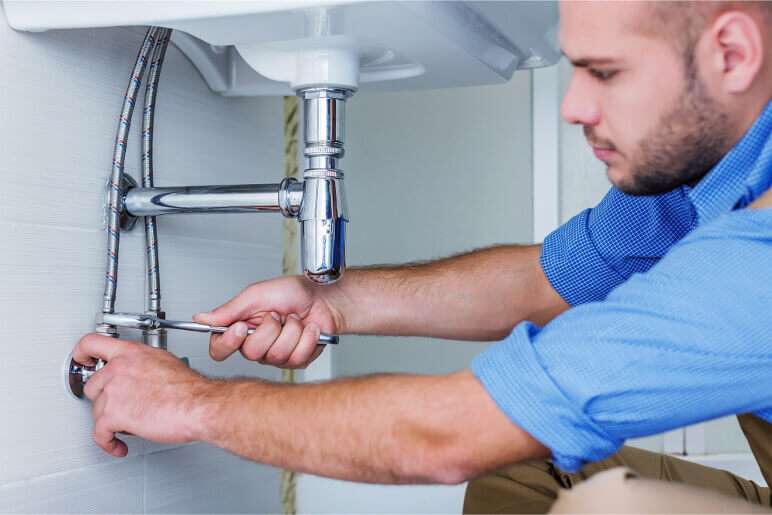
To keep your plumbing system in good condition, there are a few basic steps you can take.
Create A Regular Plumbing Maintenance Plan
Creating a regular plumbing maintenance plan is the best way to prevent small issues from becoming major problems down the line. Regular house plumbing maintenance should include:
- Cleaning out drains and pipes regularly
- Inspecting all visible plumbing fixtures for leaks or breaks
- Flushing tanks and lines of sediment buildup
- Tightening any loose hoses and connections
- Regularly checking your water pressure
- Replacing worn-out fixtures and parts
Check Your Water Pressure
Checking your water pressure is an important part of house plumbing maintenance. If the water pressure is too low, it can cause water to back up in the pipes and lead to clogs and other issues.
On the other hand, if you have high water pressure, it can wear down fixtures faster or even cause pipes to burst out.
To ensure your water pressure is at the ideal level, use a water pressure gauge to measure it and adjust accordingly.
Find & Fix Faulty Fixtures
When inspecting your house plumbing, look for any faulty fixtures that may be causing leaks or other issues. Pay special attention to faucets, toilets, and showerheads as these are the most prone to leaking.
If you find a hose or connection that is loose or damaged, tighten it up with a wrench. If the fixtures are beyond repair, replace them as soon as possible to avoid any further damage.
Watch What You Flush
Your home plumbing maintenance plan should include watching what you flush down the toilet. Things like diapers and feminine hygiene products can cause major clogs in the sewer line.
Don’t ever flush things like paper towels, facial tissues, or cotton swabs down the toilet. These items can cause clogs that are difficult to remove.
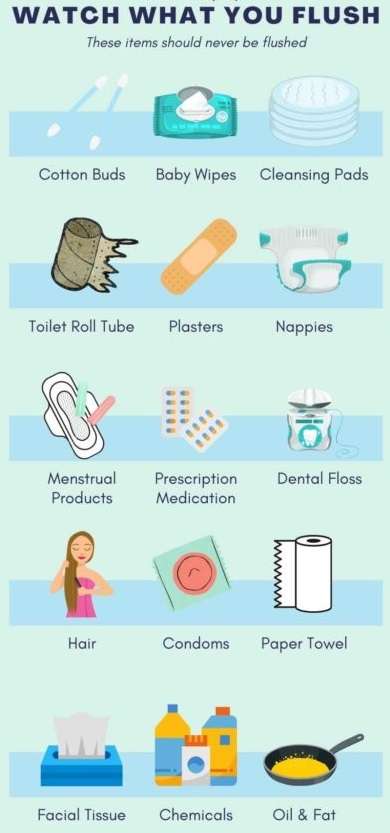
Make sure to educate everyone in your house about the importance of only flushing items that are meant to be flushed. This will help keep your sewage system running smoothly and prevent any major problems down the line.
Check For Water Leaks
Check for any water leaks in your house on a regular basis. This can be done by running the water and checking all exposed pipes and fittings for wet spots. If there are any leaks, have them repaired immediately by a qualified plumber to avoid further damage.
Also, keep an eye out for frozen pipes, especially in the winter. If you notice a pipe that is frozen, shut off the water supply to it and contact a plumber to help unfreeze it. Read about frozen pipe repair here.
Putting up insulation on exposed pipes can also help prevent them from freezing in cold weather. However, it’s better to take preventive measures by weatherproofing your house and keeping the house warm during the winter months.
Keep Your Drains Clear
Part of house plumbing maintenance is keeping your drains clean and clear. Regularly pouring baking soda and vinegar down the drain can help prevent clogs from forming.
Also, make sure to install hair catchers in the shower and sink drains as this will help keep any hair or other debris from clogging up your pipes.
Just like the toilet flush, you’ll also need to be careful with what you put down your garbage disposal. Hard items like bones, fibrous vegetables, and coffee grounds should not be put down in the sink.
Check The Valves
Valves help regulate the amount of water that flows through the house. If they are not working properly, it can lead to problems like flooding or low water pressure. That’s why it’s important to check the valves regularly and replace any that are broken or leaky.
Most house plumbing maintenance plans include checking the house shut-off valve as well. This is important in case of a plumbing emergency, such as when a pipe bursts.
Regulate Outdoor Fixtures
Outdoor spigots and hoses should also be included in your home plumbing maintenance plan. Make sure to routinely check them for any leaks or damage. If you see any, have them fixed or replaced as soon as possible.
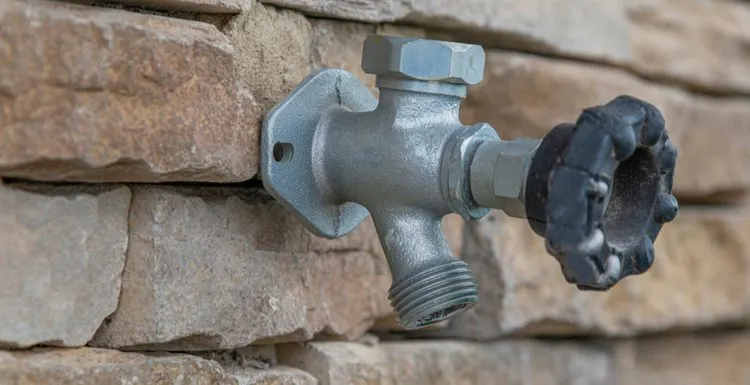
During the winter months, you’ll also need to take extra precautions to protect any outdoor plumbing fixtures. Make sure to disconnect all hoses, turn off the water supply to your spigots, and insulate any exposed pipes.
Seek Professional Help
Finally, it’s a good idea to have your house plumbing inspected by a professional at least once a year. This will ensure that any potential issues are caught early and repaired before they become serious problems.
Home plumbing maintenance is an essential part of home ownership. Following these simple tips will help keep your home running smoothly and prevent any major plumbing issues.
Be sure to watch what you flush, check for water leaks, keep your drains clear, check the valves, regulate outdoor fixtures, and seek professional help when needed. This is the ultimate plumbing maintenance checklist for homeowners that should help keep your plumbing system running smoothly for ages!
Commercial Plumbing Maintenance Plans: What To Expect
We’ve talked enough about home plumbing maintenance plans. How about commercial spaces? Well, plumbing maintenance in commercial spaces generally involves more complex systems with larger pipes and fixtures.
A reliable commercial plumbing maintenance plan should include regular inspections and maintenance of commercial fixtures, pipes, and valves.
This includes checking water meters, verifying the pressure of commercial plumbing lines, inspecting septic tanks and drain systems, and testing sewage systems.
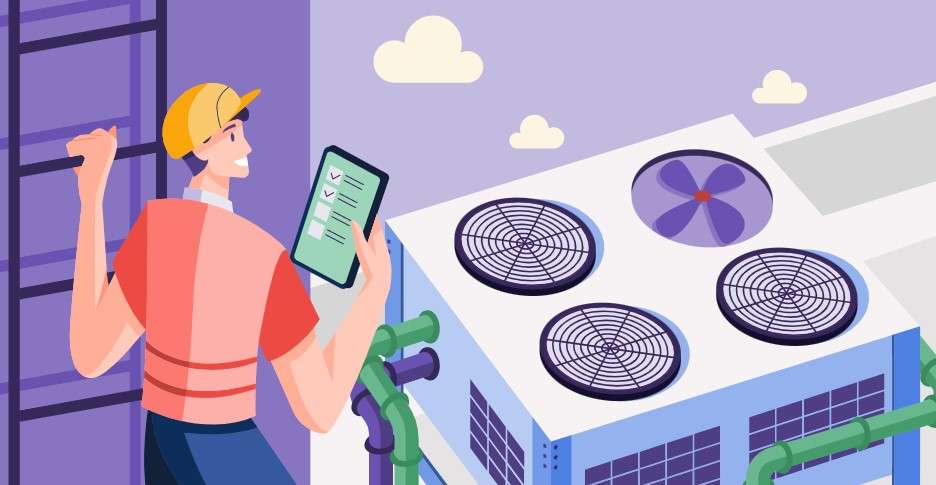
A commercial plumbing maintenance plan should also include preventive measures like installing insulation for exposed commercial pipes, applying corrosion inhibitors to commercial water tanks and commercial sewer lines, and maintaining commercial plumbing fixtures.
In addition, commercial plumbing maintenance plans should include regular inspections of commercial water heaters and commercial gas lines, at least twice a year, to ensure safety and efficiency.
Finally, commercial plumbing maintenance plans should include a detailed record of all repairs, inspections, tests, and maintenance performed to keep commercial plumbing up to date and in good working order.
Regular Plumbing Maintenance Cost In Toronto
The cost of plumbing maintenance varies depending on the size and complexity of your system but typically ranges from $80 to $150 for a basic service call and inspection.
This cost can vary depending on the type of work needed, so it is important to compare quotes from different plumbers in Toronto before making any decisions.
If you’re looking for the best plumbing service you can get here in Toronto, Citizen Plumbing can be the best option for you. With a team of trusted and skilled plumbers, We can make sure that your plumbing system is up and running.
We guarantee professional and reliable 24 hour plumbing services to both residential and commercial customers in Toronto.
We also offer plumbing services like pipe installation, HVAC install and repair, home renovation plumbing, backwater valve installation, pool installation, and many more.
With over 25 years of experience serving this community and providing excellent services, you can be sure that we will take care of all your general plumbing needs. Contact us now and get a free quote for our commercial/ home plumbing maintenance plans!
House Plumbing Maintenance Tips
Finally, here are a few regular plumbing maintenance tips to keep your plumbing system in tip-top shape:
- Check for leaks regularly and fix them as soon as possible
- Clean out sinks and faucets regularly to prevent clogs
- Inspect pipes, fixtures, and valves annually or as needed
- Make sure your water heater is serviced every six months to avoid costly repairs down the line
- Insulate exposed pipes during the winter months to prevent freezing
- Check for corrosion and rust on metal pipes annually or as needed
- Watch what you flush down your toilet and garbage disposal
Epilogue
Regular plumbing maintenance is essential for keeping your plumbing system functioning properly, and it can help you avoid costly repairs down the line. Understanding the basics of home and commercial plumbing maintenance plans will help ensure that your property remains safe, efficient, and energy-efficient for years to come.
And that concludes our guide for today. This guide provided a simplified overview of the residential and commercial plumbing maintenance checklist. We’ve talked about its types, importance, common plumbing issues and how you can prevent them.
Hope this guide was helpful and provided all the information you needed. To keep your plumbing system functioning for years to come, we strongly recommend opting in for a regular maintenance plan.
No, you won’t have to opt in to a monthly plumbing maintenance plan, but at least twice a year will be the smart choice.
FAQs
Is Monthly Plumbing Maintenance Essential?
No. Monthly plumbing maintenance is not essential but it is recommended. This helps to prevent any major issues from occurring and ensures that any potential issues are caught early and repaired before they become serious problems.
What Should Be Included In A Plumbing Maintenance Plan For An Apartment?
Common things like inspecting the plumbing lines, checking for leaks and clogs, cleaning out drains, replacing fixtures when necessary, and checking the water heater should all be included in an apartment plumbing maintenance plan. Here is an healthy housing reference by CDC.
What Is The Best Way To Maintain A Plumbing System?
The best way to maintain your plumbing system is to regularly inspect and clean all the pipes, fixtures, and valves. This will help to prevent any leaks or clogs from occurring and will keep your plumbing system functioning optimally.
Additionally, it is important to make sure you have a regular inspection and maintenance schedule for your water heater.
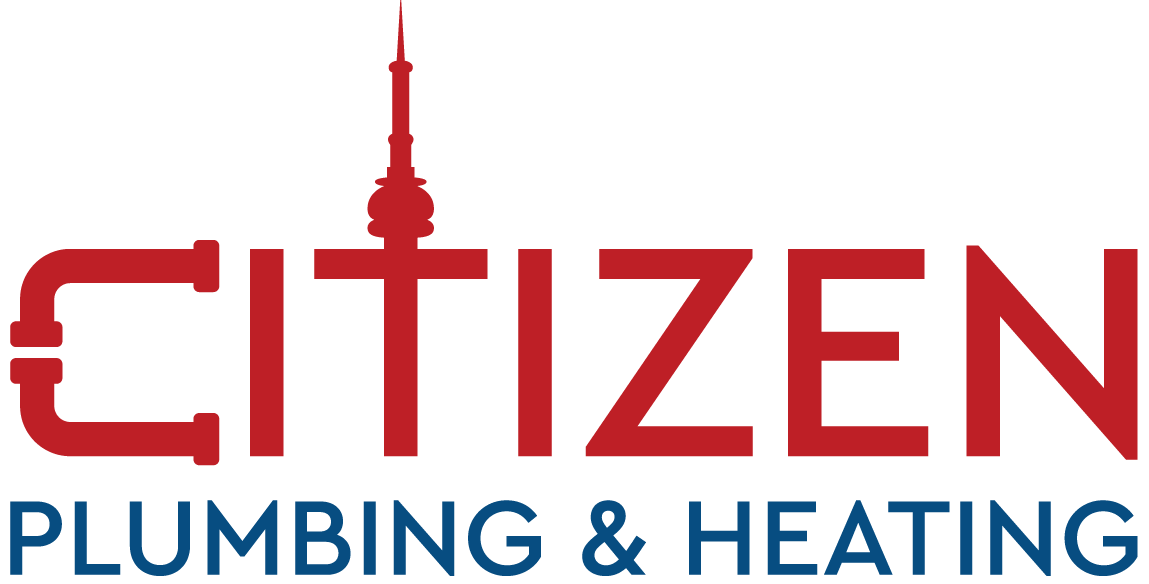
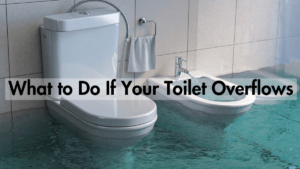




 by
by